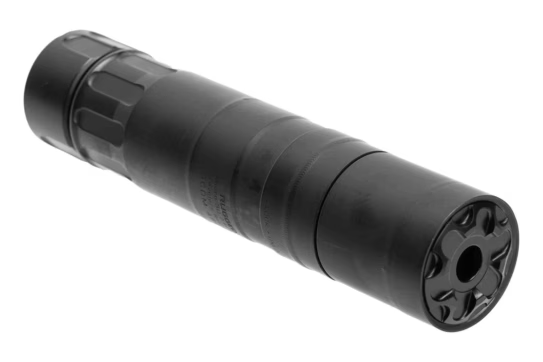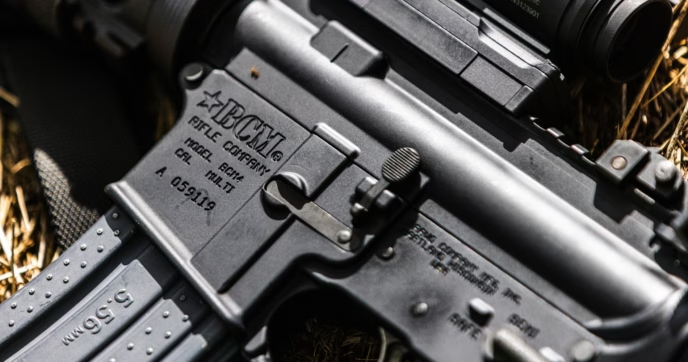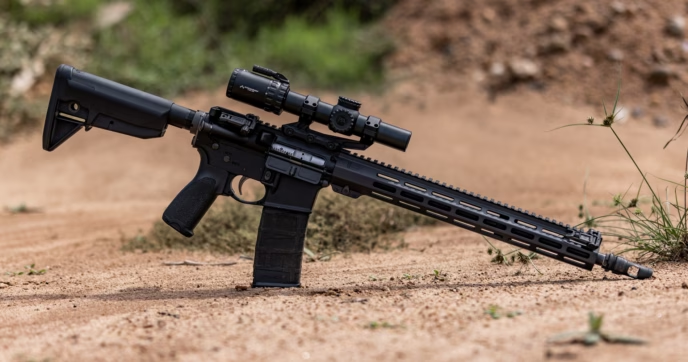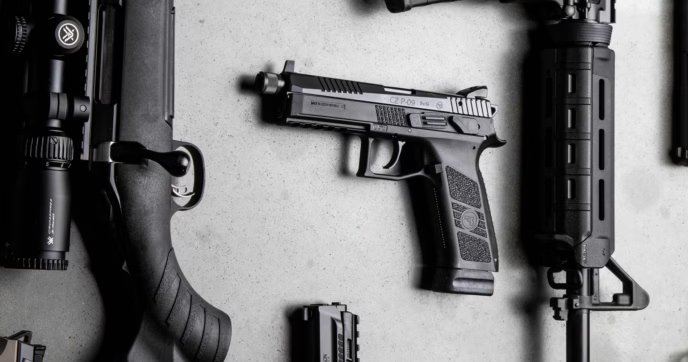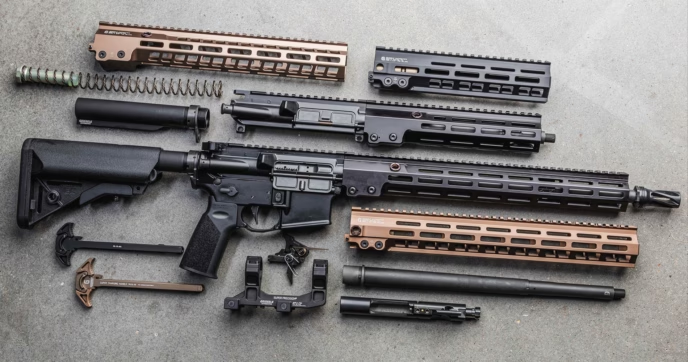The firearms industry is home to a vast assortment of unique firearms. From rifles designed for precision marksmanship to carbines, pistols, and pistol caliber carbines meant for close-quarters agility, there’s no shortage of top tier options to pick from.
Despite having a near endless number of options designed for every conceivable application, every firearm has one crucial feature in common: they’re loud. Firearms and noise are synonymous, and each one, regardless of size, can produce a sound signature loud enough to permanently damage your hearing if you aren’t wearing ear protection.
It’s precisely for this reason that suppressors have become so sought-after. Suppressors are an accessory containing a series of baffles which catch the rapidly expanding gases created after firing a cartridge, reducing the sound signature by several decibels. Although you can mount a suppressor to just about any firearm nowadays, it’s important to note that not every caliber suppresses the same, with many still being loud enough to permanently damage your ears, even when suppressed.
With the right caliber though, you can drastically reduce your firearm’s sound signature. Calibers like 9mm and .300 Blackout pair exceptionally well suppressors, as they’re capable of subsonic velocities and are specifically designed for suppressed shooting. In our last comparison of .300 Blackout and 9mm, we briefly went over the suppressibility of each cartridge, but below, we’re taking a more in-depth look into the characteristics of each.
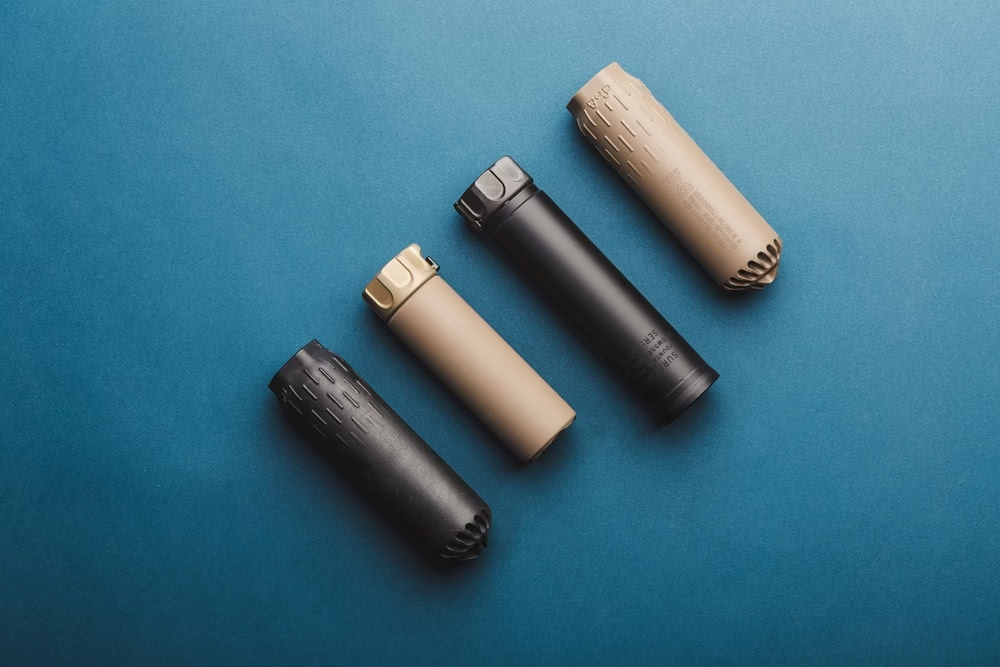
What makes a cartridge Suppressor-worthy?
Sub- vs. Supersonic Ammunition
Ammo typically comes in one of two configurations: sub- or supersonic. Although this appears as just another designation to help sell ammo, the type you choose has a profound effect on how quiet your shot is.
After firing, there’s two sounds you’ll hear: the initial boom from the ignition of propellant (gunpowder) and the sonic crack of the bullet breaking the sound barrier. While suppressors do a decent job of muffling the sound put off by the powder ignition, they don’t do anything about that supersonic crack. So, to get the quietest suppressed shooting experience, enthusiasts usually opt for subsonic ammunition.
Subsonic ammunition comes loaded with a smaller powder charge to lower the projectile’s velocity below the speed of sound, eliminating the sonic crack. While ideal for suppressed shooting, not every cartridge can be made subsonic. 5.56, for instance, is a high-pressure cartridge loaded with a lighter 55- to 62-grain projectile, and using a smaller powder charge to slow it down would render it ineffective since it doesn’t have as much mass to carry it further—not to mention that your rifle probably wouldn’t cycle either.
This is where calibers like 9mm and .300 Blackout come into play. Many 9mm rounds are naturally subsonic and use much heavier projectiles, such as 147-grain bullets in select defensive loads. Plus, with the right setup, 9mm can cycle efficiently when suppressed. Meanwhile, .300 Blackout is an intermediate cartridge like 5.56, but it uses a much larger projectile weighing anywhere from 110- to upwards of 220-grains depending on whether it’s standard or subsonic, giving dedicated subsonic loads more than enough weight to sustain terminal velocity, even when suppressed.
How Loud is Too Loud
Before getting too deep into the specifics of 9mm and .300 Blackout sound signatures, it’s important to take note of how loud gunshots can be. Gunshots, on average, can produce anywhere from 140 to upwards of 170+ decibels—well beyond the threshold of what can potentially cause permanent hearing damage.
Suppressors, as we mentioned, can reduce these sound signatures drastically, and with calibers like 9mm and .300 Blackout, it’s more than possible to achieve a quiet shooting experience that can even have the potential to be hearing safe (given the right setup). Just remember, hearing protection is always recommended, regardless of whether you’re using a suppressor or not.
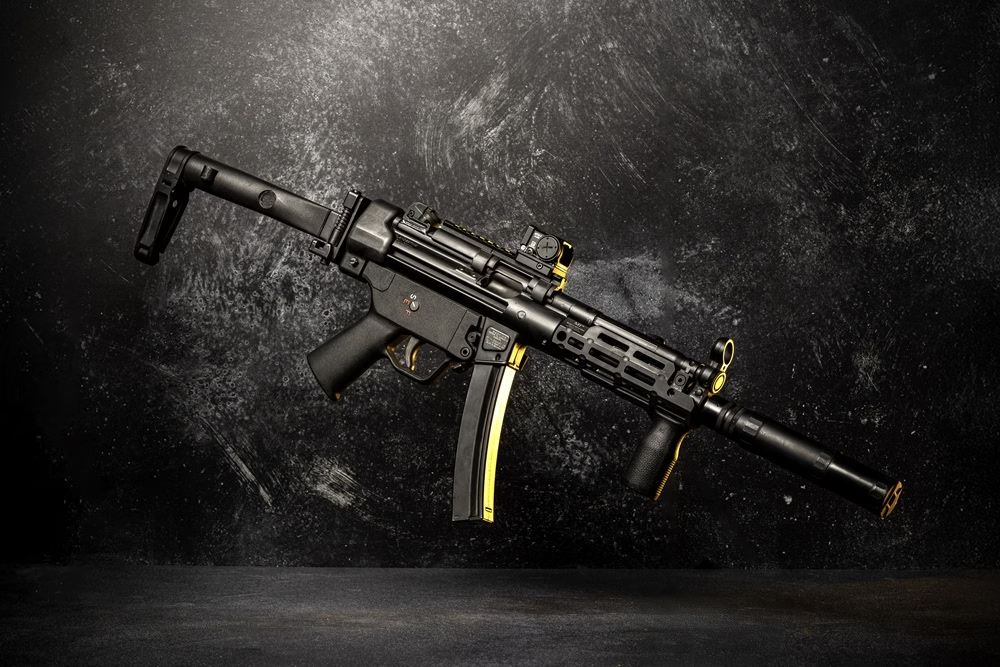
Suppressed 9mm
9mm is one of the most popular pistol caliber cartridges around, having been in use for over a century. Often subsonic, it produces an exceptionally low chamber pressure, making it a great caliber for suppressed shooting. Because of its performance, many 9mm pistols and pistol caliber carbines come with threaded barrels for suppressor use.
PCCs have become immensely popular amongst suppressor enthusiasts since they effectively provide all the benefits of a rifle, such as multiple points of contact, better stability, and better recoil control, while being able to use more affordable ammunition. As such, options like the MP5, B&T APC9/GHM9, and CZ Scorpion, for example, all come with either threaded, or suppressor-compatible barrels.
How Quiet is a Suppressed 9mm?
A suppressed 9mm firearm can be incredibly quiet when using the right ammo load and suppressor combination. Unsuppressed, your standard 9mm cartridge produces around 150 to 160 decibels after firing, but with a suppressor, it can be as low as 120 to 125 decibels. There are many 9mm pistol suppressors to choose from, with the Rugged Suppressors Obsidian 9, Q Erect9r, and PTR Vent 2 being some popular options.
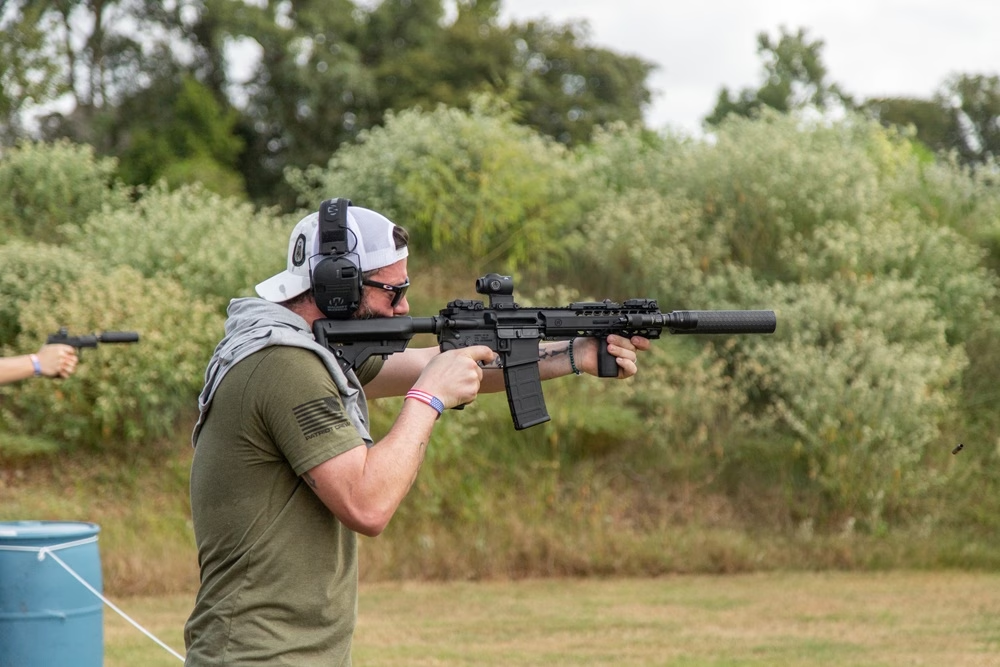
.300 Blackout Subsonic
We cover this cartridge more in-depth in our .300 Blackout guide, but on its own, it’s a pretty stout cartridge. Designed by the Advanced Armament Corporation and Remington back in 2011, .300 Blackout was designed to perform optimally in short barrels and when suppressed. Today, it’s easily one of the most popular cartridges available for the AR-15.
Depending on the load, .300 Blackout bullets typically weigh over 110-grains, with dedicated subsonic .300 Blackout ammo usually weighing anywhere from 200- to 220- grains. And since the cartridge was designed with suppressor use in mind, it cycles extremely well in semi-auto carbines like the AR-15 and SIG Sauer MCX.
How Quiet is a Suppressed .300 Blackout
Being an intermediate cartridge with a much larger powder charge, .300 Blackout is very loud without a suppressor, producing upwards of 160+ decibels when firing. Fortunately, being such a low-pressure cartridge, it can be suppressed rather effectively with the right ammo and suppressor combo.
A suppressed .300 Blackout can be as quiet as 120 to 130 decibels at the muzzle. However, if you have a tunable gas system, or are using a bolt-action rifle like the CZ-600 Trail, the cyclic noise can be eliminated as well, keeping you closer to the 120-decibel mark.
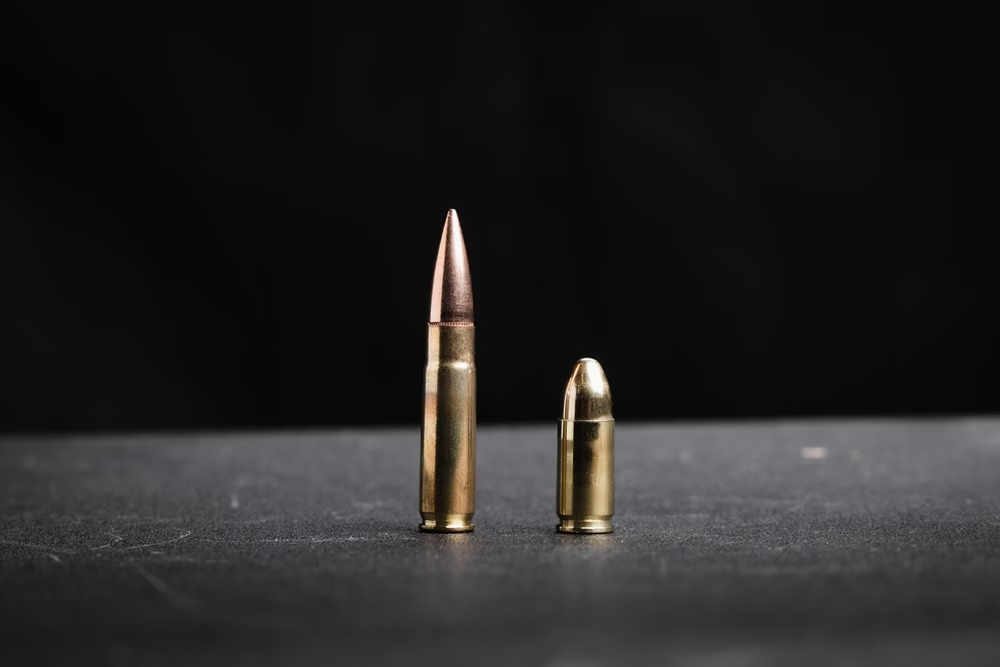
Which is Quieter?
It is understood that, when suppressed, 9mm and .300 Blackout can be incredibly quiet, but the question, however, remains: which one is the quietest? The answer to that question is entirely dependent on your setup. Ultimately, the key to achieving a quiet shooting experience comes down to the type of ammo and suppressor you use.
Type of Ammo
Ideally, subsonic ammunition is the best option for suppressed shooting, and fortunately, both 9mm and .300 Blackout have a wide range of subsonic ammo loads available from several manufacturers, with Freedom Munitions’ HUSH line being among the quietest available.
Suppressor Choice
Another key factor that affects your rifle’s sound signature is the suppressor you use. There are a lot of suppressors available, with 9mm suppressors being some of the most popular options for beginners, since they can be used as a multi-caliber option. However, it’s important to recognize that 9mm suppressors, by design, are optimized for 9mm, so they’ll suppress 9mm the best. Still, many enthusiasts commonly use suppressors like the SilencerCo Omega 9K, which can adequately suppress both calibers.
Despite being able to suppress smaller caliber cartridges rather well, 9mm suppressors aren’t the best choice for calibers like .300 Blackout. The larger bore diameter allows more of the gases to escape out the front rather than being captured within the baffles. So, if you’re planning to run a .300 Blackout rifle, a dedicated .30 cal suppressor like the SilencerCo VELOS 7.62 or the HUXWRX FLOW 7.62 are solid options. Plus, options like the FLOW use a flowthrough design, reducing gas blowback when firing.
So, which is quieter?
When using dedicated subsonic ammo and the proper suppressor, both calibers produce a sound signature under or around 130 decibels, but between the two, 9mm wins out, with it producing a 120 to 125 decibel sound signature when suppressed, with most shots falling closer to the lower end of that sound spectrum. Still, .300 Blackout can be a solid pick as well, producing 120 to 130 decibels at the muzzle when suppressed. Just keep in mind that regardless of what caliber you opt for, your results are heavily dependent on the type of ammo you use, as well as the suppressor itself.
Conclusion
By now, there’s no question as to why you should shoot with a silencer—they’re an excellent accessory that helps to lessen the intense sound signature of rifles and pistols, making them not only safer, but more pleasant to shoot. However, this doesn’t mean that using a suppressor will magically turn every firearm into a muted one.
Just as we mentioned, not every caliber suppresses the same. Your high-pressure calibers that move well over the speed of sound like 5.56 and .308 are difficult to effectively suppress, and while you certainly can use a suppressor on such rifles, they won’t exactly be hearing safe. This is what makes naturally subsonic pistol calibers like 9mm, and specially designed intermediate calibers like .300 Blackout so special.
Both can be easily suppressed, as there’s an exceptionally vast assortment of subsonic ammunition available for each one, and regardless of whether you plan to use a 9mm pistol or an AR-15 chambered in .300 Blackout, there’s no shortage of top-tier suppressor options to choose from. Plus, with the right combo, it’s even possible to get a hearing safe shooting experience—just keep in mind that hearing protection is always recommended when shooting.
Finally, if suppressor ownership is new for you, it’s important to note that you can’t just buy a suppressor like you can with any other muzzle device. Being an NFA restricted item, the process is lengthy and a bit more complicated if you don’t know what you’re doing. Fortunately, we cover everything you’ll need to know before buying one in our guide, “How to Buy a Silencer”.
